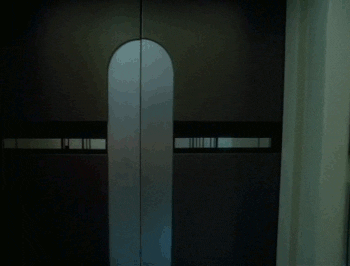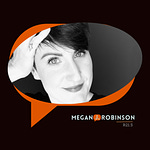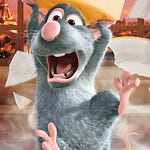ASSUMED AUDIENCE
anyone who feels like their minds are slowly melting and their souls dissolving into smoke by the ever-accelerating instantaneity of online life
Intro
I often hear people lament or complain or observe how their attention and memory seems to be more fractured, less focused or sustainable since online media became ubiquitous. We all joke and cringe at how many tabs we have open in our web browsers, recognizing that it’s unlikely we’ll ever fully engage any of them to the degree we want.
I myself have spent the last three or four years trying to figure out who I am, not just because I’ve changed over the course of 20+ years, but because I can’t fully remember the things that contributed to that change. My ability to pay attention to what’s happening in my life, to remember how I got to be the person I am today—it has felt truly diminished.
In my reading this month, I encountered the idea of narratives and databases as types of “technologies” that we use to navigate or describe our experience of the world. So I started wondering about the effect that these could have on our sense of self. How might these technologies influence how we both develop and maintain our identities in the face of expanding data and multiple narratives?
I want to explore an idea that this experience of fracturing that we associate with being online somehow relates to our intense drive toward authenticity, for freely and “creatively presenting [our] unique self to the world.”1
Stay with me for the next month or so, I think it’s connected.

Quick Reminder
Paid subscriptions for this newsletter will begin on July 1. You can read more about it here. 👋🏼
TL;DR: This newsletter is public and free to all, but sustained by the patronage of those who value the work and have the financial means to support it.
If you liked this issue and just want to leave a tip, you can do so here.
New Video!
Characters in a Story
Does anyone remember the “choose your own adventure” books from childhood? Do these even still exist?
The “choose your own adventure” books offered you, the reader, a sense of agency in how the story could turn out. Every few pages, you’d be offered some options of how the story might proceed from that point. You could be a detective, a hiker, a traveler on a train, in a desert, or a city, depending on the choice you made and the page you flipped to next.
And once you’d read through one story, you could start again and make a different choice the next time, see where this new tale might lead. Of course, there were only so many options within a single book, and depending on your tolerance for flipping back and forth, the excitement could quickly fade out.
But the sense of a coherent story, a particular path by which we could follow along and discover what happens next—that remained perceptible no matter the choices made. We could discern a kind of meaning from the combination of options and the sequence in which we made them. We could understand ourselves as participating in that story.
Scholar Walter Fisher developed one of my favorite theories of communication: the narrative paradigm. Basically, Fisher suggests that human beings (that’s us) are natural storytellers, more convinced by a good story than by a rational argument. A story offers “words and/or deeds that have sequence and meaning for those who live, create, or interpret them.”2 A story says something about the world and influences us to act in certain ways.
When we encounter a story, we test it against what Fisher calls the principles of coherence and fidelity: how much a story makes sense to us, and how much it aligns with our experience or knowledge of other stories.
We can improve our ability to assess and interpret these stories through experience, exposure, and knowledge, but the key factor to our acceptance of a story is the reliability of the narrator or actors within it. If we think that the person telling or living a story is doing so in such a way that’s predictable and consistent, aligning with the narrative, we find it much more believable, much more acceptable. However, if the characters of the story don’t behave “characteristically,” if they contradict the story, we won’t trust them; we won’t find the story believable.3
Fisher points out another key feature of stories: that they imply an audience.4 But more importantly, this audience is comprised of individuals who “conceive of themselves in very specific ways.” If the story we’re hearing contradicts or denies our “self-conception,” who we think we are, then it “does not matter what [that story] says about the world.”5
Though speaking about adaptive technologies for differently abled people, Sara Hedren observes that tools and technologies are not just “extras, hanging around at the ready for moments of special assistance. They are the ordinary and necessary amplification of the body itself. […] The stuff we use between our bodies and the natural or built world—these augmentations are how humans organize and get life done.”6 So if stories are how we make sense of life, how we “organize and get life done,” it’s not too much of a stretch to consider narrative as a kind of human technology.
We use stories to define and extend who we are into the world, to make sense of what’s happening around us and how the world works. And we understand ourselves as participating in each others’ stories, across past, present, and future.
Time, Can You Teach Me About Tomorrow…
N. Katherine Hayles points out that narrative is “bound to the linear sequentiality of language,” and its primary purpose “is to search for meaning, making narrative an essential technology for human beings.”7 I’ve mentioned sequence a few times now, which implies and relies on a linear “this, then this, and then that” presentation of elements. Sequence also conveys the idea of time, occurring across successive minutes, hours, and days, stretching through the past and extending toward the future.
Karl Weick, another communication scholar, points out that in a story, events are “re-sorted and given an order, typically one in which a sequence is created. Stories posit a history for an outcome. They gather strands of experience into a plot that produces that outcome. Sequence is the source of sense.”8 But we only get sequences through linkages, through connections.
See, what happens in a sequence is we take a present event, something in our direct field of experience, and we look for a previous instance, a past occurrence that mirrors or illuminates it. Once we’ve found that past moment, we attach it to the present experience. We relate the two and construct a narrative that makes sense. We build a history of how and why we came to this time and place. We tell a story.
And it’s in that act of connection, that moment of relation where we create meaning, where we define something of significance. But the more difficult it is to find previous instances that resonate, the harder it is to tell a coherent story, and the longer we have to search for or uncover meaning.
As Sacasas points out, narrative “reflects our fundamentally time-bound existence,” and it is only narrative that “can temporally relativize the meaning of words and deeds.”9 It’s only by laying events and connections in a sequence over time that we can properly use this meaning-making technology, that we can determine any coherence or fidelity in the narrative.
So, to tell or hear or discern a story takes time. It requires attending to the moments that resonate, cultivating the connections we make between them. It requires evaluating the coherence and the reliability of a given narrative, seeing if it changes or affirms our self-conception, and deciding if it is ultimately acceptable.
Will the story influence who we are and how we act in the world?
The Rise of the Database
I’m not a tech head, so I’m gonna go light on the details of how databases actually work, and I think we all have a pretty good idea of what they entail. But just so we’re all on the same page, here’s what Hayles points out about databases: they possess “the ability to order vast data arrays and make them available for different kinds of queries.”10 Building on that, Sacasas observes that databases are “tools for storing and sorting information: they are mnemonic technologies, one of their chief functions is to act as massive and relatively accessible external memories.”
Along with Doctor Who’s absolutely terrifying Weeping Angels,11 we have, through Star Trek, the implacable Borg.12 The Borg are a cyborg collective overwhelming and eradicating whole civilizations and systems for the purpose of “achieving perfection.” While they claim to “add” (i.e., steal) biological and technological distinctiveness to the whole, the Borg are a relentless assimilator of difference. Resistance is futile.13
The Borg are an endless assimilation of new persons, with no recognition of those persons’ history, meaning, context, or future. The Borg exists to exist. The individual exists to proliferate the Borg.
If you’ve watched any Star Trek when the Borg are in play, you notice that attempts at interacting with drones are usually met with failure. Unless the drone or the collective perceives a direct threat to the work at hand (the “query,” if you will), they simply ignore any engagement that doesn’t fit within specified parameters. Databases work in a similar way. Because categories and properties of data need to be clearly defined and structured, so that any data collected can be accurately parsed, any “indeterminate data” that doesn’t fit within the pre-defined categories “must either be represented through a null value or not be represented at all.”14 The drone expends zero effort toward making sense of these interactions, the “indeterminate data.” They have no meaning-making technology that enables them to explain or interpret these anomalous encounters.
You see where I’m going with this.
The Borg are a personification of the Database.
One reason we find the Borg so horrifying is that they subsume personal narratives. They ignore what makes persons unique by breaking them down into constituent parts and re-combining them in ways that destroy a person’s cohesion and integrity, their sequence, so to speak. Need warrior mode? Switch out the prosthesis. Need a data analyst? Install a new chip. The Borg drones are simply snippets of data floating around, bytes to be combined and reassembled in every new situation. There is no meaning, simply function. As Sacasas points out, the Database is “indifferent” to both time and to truth, the data points contained therein having been unmoored from sequence and assigned equivalent values, which is to say, no value at all.
So, at this point, you may be thinking, “I have lost the thread. What are we even talking about? Where is she going with the Borg?”
So, take some time, think about it. Then come back next month, and we’ll make like Justin Timberlake and bring it on down, mm-kay?15
Let’s be hopeful, creative, and wise—together.
Shalom,
Megan.
If you’d like to take a mo’ and slow your roll, my Guide to Cultivating CEDAR in Your Life might be just the help you’re looking for. You can find out more at R21.5 Coaching.
Andrew Root, The Church After Innovation, pp. 14-15.
Walter Fisher, Human Communication as Narration, p. 58.
ibid., pp. 47-48.
Which, duh. If a story echoes in a theater and no one is there to hear it, is it even a story?
ibid., p. 75.
Sara Hedren, What Can a Body Do?, p. 26.
N. Katherine Hayles, “Narrative and Database: Natural Symbionts,” p. 1606.
Karl Weick, Sensemaking in Organizations, p. 129.
L. M. Sacasas, “Narrative Collapse”
Hayles, p. 1604.
Those are seriously creepy mother-f****rs.
I’ve long maintained that one can be a fan of either Star Wars or Star Trek, but it is rare to find a person who is equally a fan of both. Star Wars is a space opera, a spaghetti western out amongst the stars. Star Trek has some claim to actual scientifically-based fiction, and I was trained to spot the difference. Ergo, proud Trekkie here. Years of watching Star Trek: The Next Generation with my dad have left me with the never-diminished thrill of hearing “These are the voyages of the starship Enterprise. It’s continuing mission: to explore strange new worlds, to seek out new life and new civilizations. To boldly go where no one has gone before!” I mean, really. Can it get better than that?! I have the same delight at hearing the opening chords of TNG’s theme song as I do hearing the theme song for Indiana Jones.
Had to say it.
Hayles, p. 1605.
To whichever ‘ville you choose.
















The Assimilating Database: Is Resistance Futile?